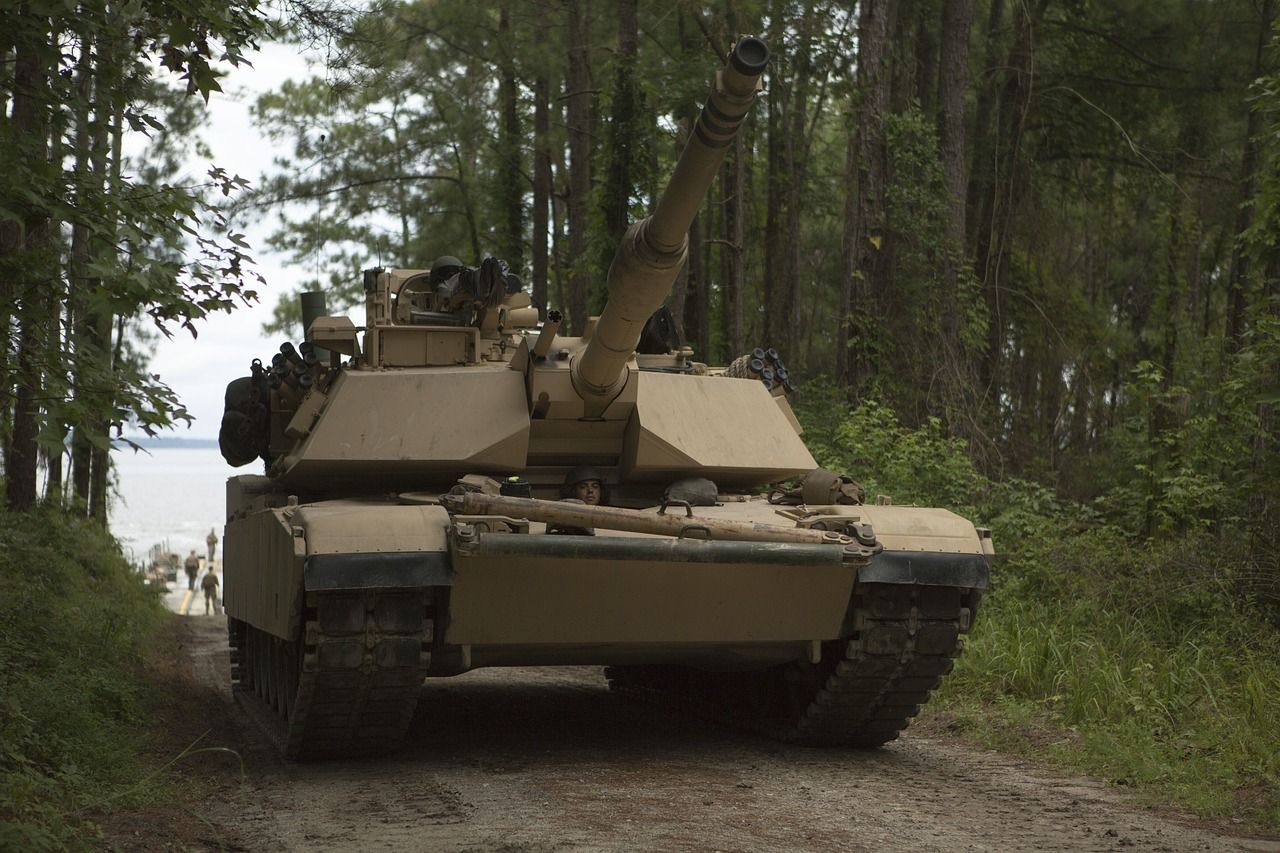Laser cutting is one of the most modern and versatile metalworking technologies, which is of particular importance not only in civilian industries, but also in the defence industry. In military development and manufacturing, extreme precision, fast production times and high quality are often essential – all factors for which laser cutting provides the perfect solution. How is laser cutting, 3D laser cutting used in the military industry? In this article, we explore this topic.

What is the concept of the military industry?
The military industry (or defense industry) is the branch of industry that deals with the manufacture, development, and maintenance of military equipment, weapons, vehicles, and other military equipment.
This includes, for example:
- Weapons: firearms, missiles, artillery
- Vehicles: tanks, military aircraft, warships, armored personnel carriers
- Electronics: radars, communication systems, drones
- Protection systems: air defense systems, missile defense systems
- Ammunition: ammunition, bombs, explosives
The military industry often works for government orders, as its products are made for armies and other defense agencies. In some countries, this industry has a major economic and political role and is closely linked to national security.
Why is laser cutting used in the production of military equipment and vehicles?
Laser cutting Highly accurate technology capable of working with tolerances of up to micrometers. This is especially important in the military industry, where flawless fit and durability of components play a critical role. Whether it’s the armor of a combat vehicle or the structure of an unmanned aerial vehicle (UAV), laser cutting allows for smooth, distortion-free cuts.
Areas of application in the military industry
Component production for military vehicles
The structural and cladding elements of tanks, armored personnel carriers, military trucks or mobile missile systems are often made of high-strength steel. Laser cutting is a quick and efficient method of machining these materials, especially when it comes to creating intricate geometric shapes.
Aircraft & Drone Parts
In military aviation, it is essential to use lightweight yet strong structural elements. Laser cutting is ideal for cutting aluminum, titanium and various composite materials – all with a minimal heat zone, which is particularly important for preserving the material structure.
Weapon Parts & Precision Tools
For small arms, firearm components, optical targeting systems and other precision mechanical elements, the manufacturing tolerance is minimal. The precision application of laser cutting also enables the serial production of complex, small components.
Armor and defense systems
When cutting steel or composite armor for armored vehicles and bunkers, it is important that the cutting is fast, deformation-free and can be standardized. Here, too, laser cutting has an advantage over other technologies such as plasma cutting or waterjet cutting.
Prototype development and small series production
Military developments often require rapid prototypes or custom components that have not yet reached the stage of serial production. Laser cutting is highly efficient in this context, as no tools are required and parts can be manufactured directly based on CAD models.
Materials commonly used in laser cutting in the military industry
- Armor steels (e.g. Hardox, Armox)
- Aluminum Alloys
- Titanium – mainly for aircraft
- Carbon fiber composites
- Other special materials
Laser cutting or 3D laser cutting?
Laser cutting and 3D laser cutting work on a similar principle (laser beam material processing), but there is a significant difference between them in terms of geometry and method of use.
2D laser cutting – military industry example:
Situation:
A manufacturing plant cuts steel plates for armored vehicles. Various armor plates must be tailored to the sides and bottom of the vehicles. These plates are made of flat material and are only subsequently bent or welded.
The 2D laser cutting machine can precisely cut the required shape from the thick sheet steel – such as door cutout, viewing slot, screw slots, etc.
Its advantage is that it is fast, accurate, and can handle very strong material.
Typeexample: Cut-out armor panels of BTR or Humvee type vehicles.
3D laser cutting – military industry example:
Situation: A military supplier manufactures missile launch tubes or aircraft parts. Pipes, casings or bent aluminum alloys are not flat but spatial shapes.
The 3D laser cutting machine can cut precise openings on slanted or curved surfaces, such as ventilation grilles, mounting points or openings for optical sensors.
Such cuts can often be mounted directly without subsequent processing.
Type example: Cutting out combat helicopter casing elements or fine-working carbon fiber bodies of drones.
|
Summary in the Context of the Military Industry |
||
|
Type |
Application |
Example tool |
|
2D laser cutting |
Cutting out flat steel armor plates |
Combat vehicles (e.g. tanks, armoured jeeps) |
|
3D laser cutting |
Cutting curved, intricate shapes |
Missile tubes, aircraft enclosures, drone bodies |
Other Material Processing Technologies in the Manufacture of Military Equipment
- Waterjet cutting – Suitable for cutting heat-sensitive materials (e.g. composites).
- CNC Machining – High-precision milling, turning, drilling; for weapon and vehicle parts.
- 3D printing (additive manufacturing) – For the production of prototypes, spare parts and lightweight structures, even with metal.
- Injection molding – For the production of plastic and composite parts in large serial numbers.
Final Thought
Laser cutting and 3D laser cutting have become key players in the manufacturing processes of the modern military industry. The precision, speed and versatility of the technology allow for precise machining of parts for military equipment such as combat vehicles, aircraft and drones that would not be available with other methods. 2D laser cutting is ideal for cutting flat metal sheets quickly and precisely, while 3D laser cutting also allows you to fine-tune intricate, curved parts. With the continuous development of the military industry, the Laser Cutting Its role will only grow, as it is able to meet the highest standards of precision and manufacturing. With the rise of automated and digital production systems, laser cutting will continue to be a fundamental technological solution in the development of future protection systems.
If you need a partner who is experienced in sheet metal processing, metal structure fabrication and laser cutting tasks, then feel free to contact us. Our team performs the tasks entrusted to them quickly, precisely and in excellent quality.



